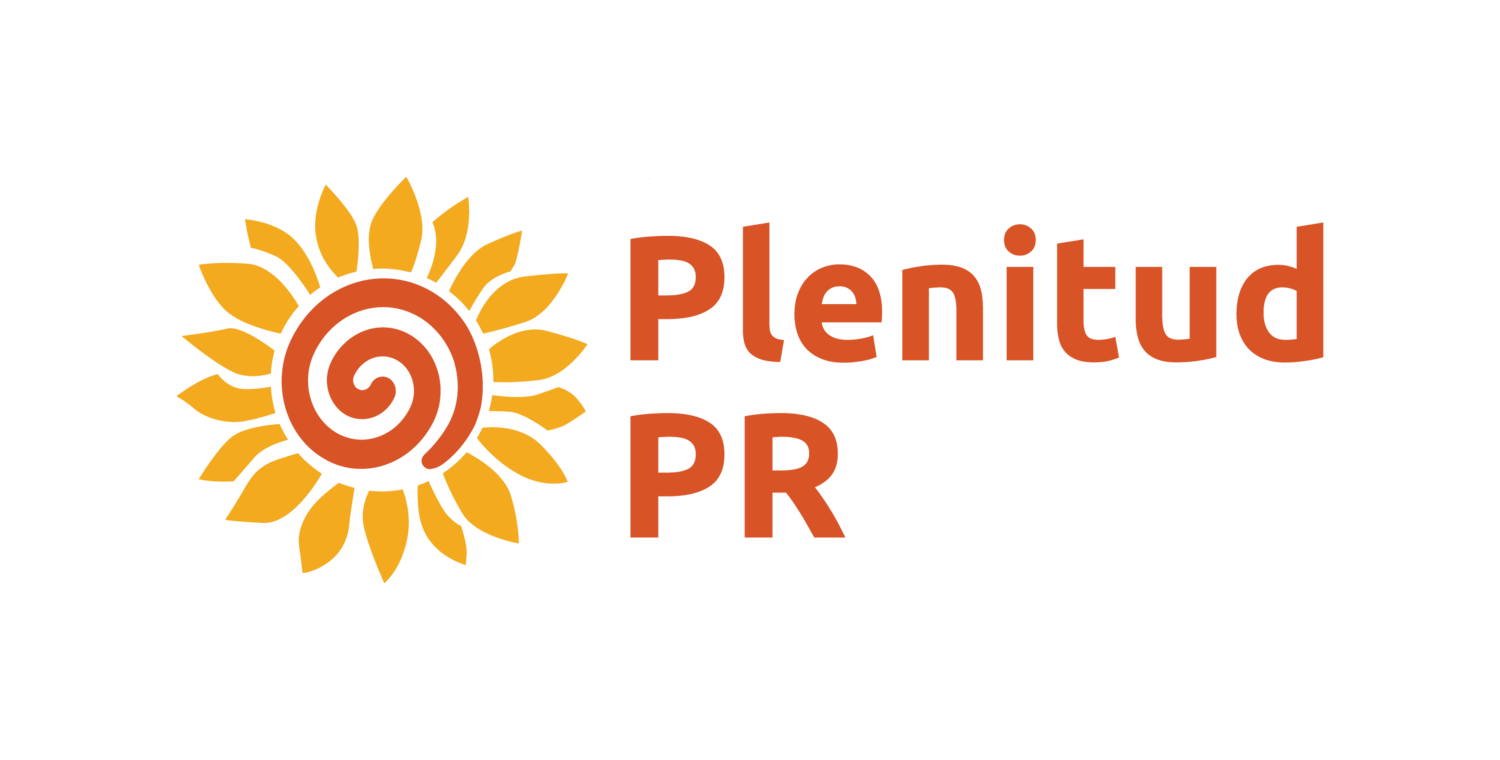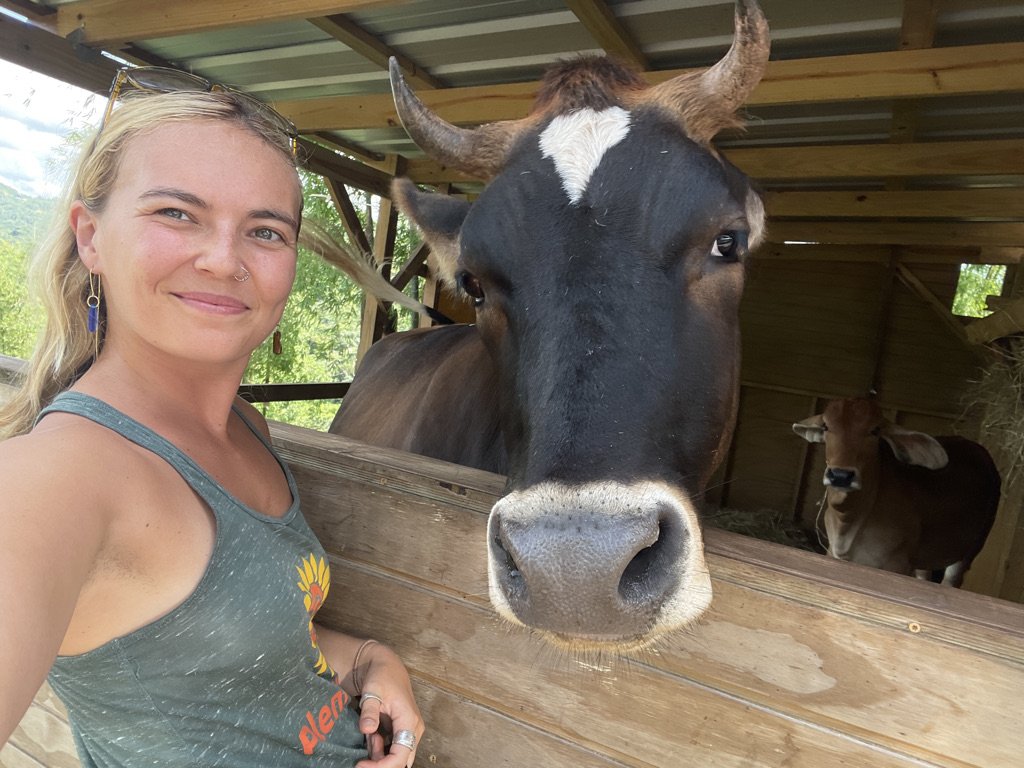It’s Time to Change Our Relationship With “Cattle”
Our cow companions! Radha (left) and Shekinah (right).
In their essence, cows are beings that nourish the spaces they inhabit, and the other living beings they coexist with. The truth is that many people don’t know this, despite the fact that cows have been used in farms from the moment they were first brought to Puerto Rico. Ironically, while we have been including cows in farms and agriculture for centuries, we still have much to learn about what they offer in a permaculture design system, and also what they offer as living beings in an ecosystem as a whole. Cows bring countless blessings and so much insight to the importance of compassionate action from one living being to another.
Anyone who works in permaculture, sustainable farming, and/or vegan activism can tell you that cows are fascinating beings. Beyond their cuteness and playfulness (they LOVE cuddles and games), their digestive processes make their dung priceless for soil regeneration and fertilizing crops. Their milk, which they tend to be best known for, is also abundant. Many cows, when emotionally bonded to the humans that care for them, actually start to produce milk when they notice children in their human family are hungry, or simply as a way to “caretake” for the humans that they love. It is important to recognize the value of these animals, especially as we drink milk or consume other dairy products. To create a symbiotic, mutually beneficial relationship with the cow, we have to consciously remember that we do not want to take advantage of the beautiful gifts they offer to us.
All living beings are connected. Let’s review what that means: every being that’s part of the animal kingdom, the vegetable kingdom, and the mineral kingdom (including rocks and the soil!) is a living being. If we apply the idea that all living beings are connected, this means that each action of every being directly affects the wellbeing and the rest of us. The same way that our actions as humans affect the whole world, the presence and movement of each animal, plant and mineral affect all living beings that surround it.
Cows have the capacity to literally benefit every single being with which they share a space.
As a collective, humanity can certainly learn from this! The mistreatment of animals that we have built into our social structures in order to “produce” cow meat and milk, as well as all of their byproducts, doesn’t only prevent us from living in harmony with our environment - it harms all living beings. For example, intensive animal factory farming is the leading cause behind global warming. It is responsible for the deaths of 23 million land animals per day. The mass production of animal feed crops (like soy and corn) for these factory farms is estimated to emit 2.4 billion tons of CO2 every year. Also, factory farming accounts for 37% of methane emissions, which has almost 20 times the global warming potential of CO2. This disharmony with our environment disconnects us from our food and water sources, and threatens all living beings’ capacity to live full healthy lives, both physically and mentally! When we look at a cow tending to its well-being and that of its family, even when conditions are rough (like after a hurricane or other natural disaster), we can learn to notice how it fends for itself and also for its loved ones.
Shekinah grazing in the pastures at Plenitud PR.
Creating systems where we coexist with a diverse range of species is necessary. Usually, the more species live in an ecosystem, the stronger it is! Each living being that inhabits an ecosystem benefits its balance, and that benefits everyone. Cow dung, for example, is one of the best fertilizers because of its nutrients. At Plenitud, we make it into compost and compost tea to fertilize our crops and promote microorganism growth in the soil. This is important because microorganisms “recycle” nutrients and make them bioavailable to plants, as opposed to synthetic fertilizers, which contain the compounds with which to nourish plants, but not the microorganisms to retain them. Using compost tea or cow dung compost as fertilizer means that the soil has a better chance of retaining these nutrients when it rains. All with the help of our beloved cows!
If we observe the way that cows exist, we can learn so much about our own capacity to caretake the environment that we inhabit as well as ourselves. This allows us to also observe our own routines and evaluate whether they threaten or nourish the living beings in our environment. Learning to exist in harmony with our environment isn’t only done via “drastic” measures, but through changes in our daily routines, dietary choices, and waste management. And of course - we will learn how everything that we do to another living being, we also do to ourselves.
Over the centuries, humans have created an unsustainable paradigm worldwide, mostly focusing on how to maximize taking from animals rather than giving back to them. Therefore, the question is: how do we change our habits to stop the cycle of harm, and live more harmoniously with the natural world? The climate crisis and the way it’s impacting our communities forces us to find answers to this question.
Newfound friends! Seona, Radha, and Shekinah spending time together.
We start by doing just this: questioning. The meaning that we assign to something can both nourish it or destroy it. If we apply this to our relationship to animals, and to what cows represent to us as a collective society, that means allowing ourselves to look at cows as if we’ve never seen one before, and “meeting” them again so as to allow space for us to create a new concept of cows - kind of like connecting with a newfound friend.
Want to know more about how you can better connect with a cow to create more harmony in your environment? Read more about how our very own master horticulturist and animal husbandry expert Katie Bullis puts this into practice every day!




